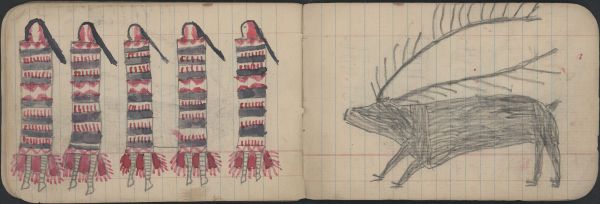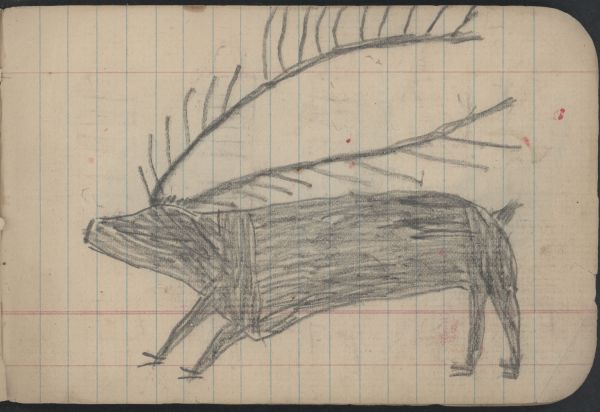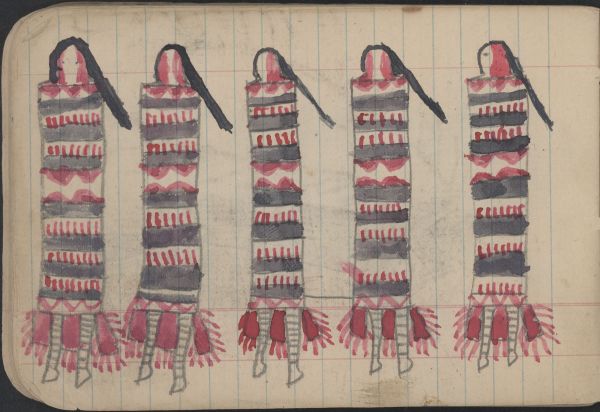ANIMALS: ELK; GROUPS: Five Women Dance
Ethnographic Notes
Right: Male elk with antlers with many tines. This pencil-only drawing depicts a large bull elk. Like the bison in the plate before (38), it fills the entire page. Its rack of branching horns is greatly exaggerated, reaching the length of the body. The few other details are: short tail; split hooves on the four feet; and different texture for the ruff of fur around the shoulders. Media: Lead pencil outline, details, and fill Left: Five identically dressed women appear to dance, as their braids sway to one side. They all wear red face paint: two have half of their faces are painted red, and three have both vertical sides of their faces painted red. Identical blankets are black-and-white striped with red patterns in the white areas: red scallops or half-circles (seen in this ledger’s tipi designs) and small vertical stripes. The bottom edge is a row of red zigzags on white, which connotes lightning or power: “The Cheyenne belief is that lightning shoots out from the eyes of the thunderbird, which seldom misses is target” (Cowdrey, 1999: 152). The semicircle designs may suggest the four sacred mountains of Cheyenne people, located at the four directions of the cosmos. The full number of four is visible in the middle of all the blankets. All the women show fringed red cloth protruding below their striped blankets—the tops of their leggings turned over for additional finery (Petersen, 1983: 287). These are identical to those in Plate 24 of this ledger. See that plate for discussion of the association of fringe with scalps. They all have penciled lines in stripes from ankles up their legs to the blanket. Their feet are, like all of the others in this ledger, identical to horse hooves. The drawing resembles this ledger’s Plates 7, 11, 24, and 27: rows of women dressed nearly identically. Media: Pencil outlines and details, black ink, red watercolor


